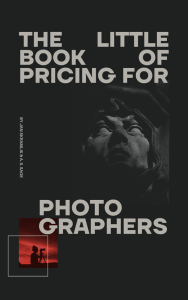Ask ten photographers whether you should publish your prices online, and you’ll get ten different opinions. Well, to be honest—ask ten photographers about anything involving money, and you’ll probably get only total silence. But that’s not the point. It’s a surprisingly emotional topic—and one that can genuinely impact how many inquiries you get, the quality of those leads, and even your reputation.
Many photographers (myself included) tend not to publish prices. Not because we’re ashamed of our rates—far from it—but because we worry about automatically discouraging potential clients. At the same time, there’s an upside to doing just that: by discouraging bargain hunters and time-wasters, we can focus on people who genuinely value what we do.
So, should you look at competitors and copy what they’re doing? Not necessarily. Your decision should be shaped by your own brand, market, and comfort level. Let’s break it down.
The Pros of Listing Your Prices
Transparency builds trust
Clients like knowing upfront what they’re walking into. When they see clear pricing, they feel you’re open, honest, and confident in your value. It removes the mystery and helps establish you as a professional.
Filters out low-budget inquiries
You’ll save time by reducing emails from people who simply can’t afford your services. This frees you to focus on qualified leads who already understand your price range and are willing to invest.
Positions you as confident and professional
Showing your prices says, “This is what I’m worth, and I stand by it.” It can elevate your brand and help you avoid haggling or awkward conversations about money.
Improves SEO
Believe it or not, people do search for things like “wedding photographer prices” or “portrait session cost.” By including pricing on your site, you increase the chances that Google will show your page when potential clients search.
The Cons of Listing Your Prices
Can scare away potential clients
Some clients may leave your website without contacting you, even if you might have been able to customize a package for their needs or work within their budget. You lose the chance to have that conversation.
Limits flexibility
If your work is highly customized, flat pricing may not reflect the range of services you offer. You risk oversimplifying your value or creating confusion about what’s included.
Encourages price shopping
When visitors see prices, some will compare you purely on numbers, ignoring important factors like your style, experience, or client reviews. This turns your art into a spreadsheet competition.
Requires constant updating
Prices change — and if you forget to update your website, you might end up in awkward situations where the price a client saw online no longer matches your current rates.
Best of Both Worlds?
Many photographers choose a hybrid approach. For example:
- “Starting at” prices gives a ballpark figure without locking you into exact numbers. I hate that, personally, but they work well.
- Example packages outlines what’s included at different levels.
- Downloadable pricing guides offers detailed info in exchange for an email address, helping you capture leads while providing transparency.
Making the Right Choice for You
There’s no universal right or wrong here. Some photographers thrive with fully published price lists; others prefer to have that conversation only after a client reaches out.
The key is to make a deliberate choice that fits your brand, your comfort level, and the kind of clients you want to attract.
And if you’d like to go deeper—we’ve written a full workbook about pricing strategies for photographers: The Little Book of Pricing.




